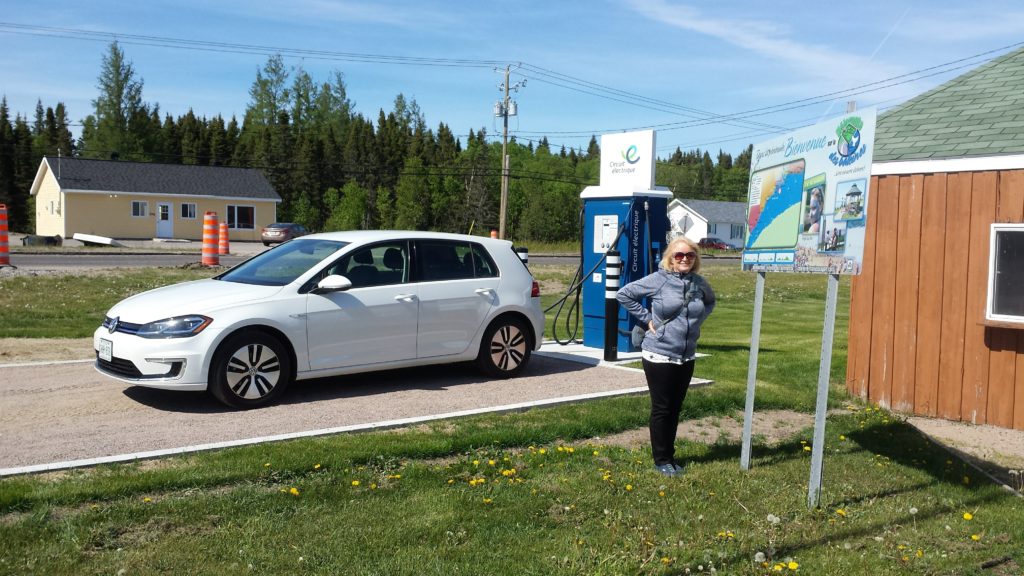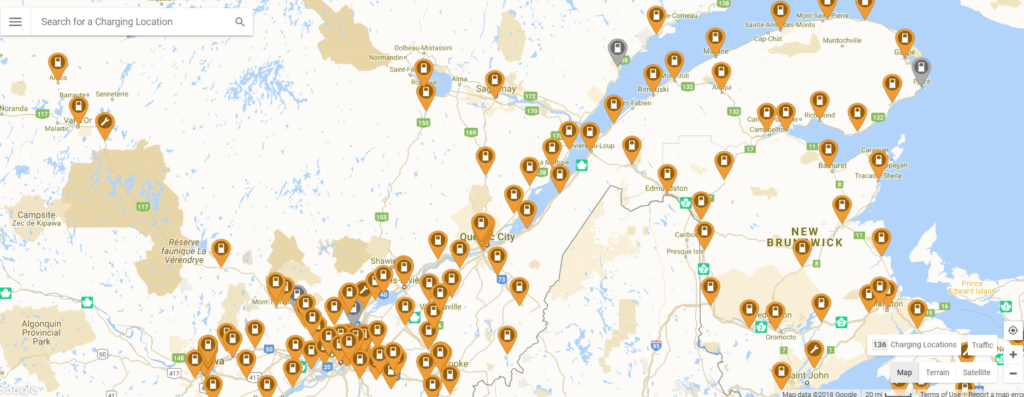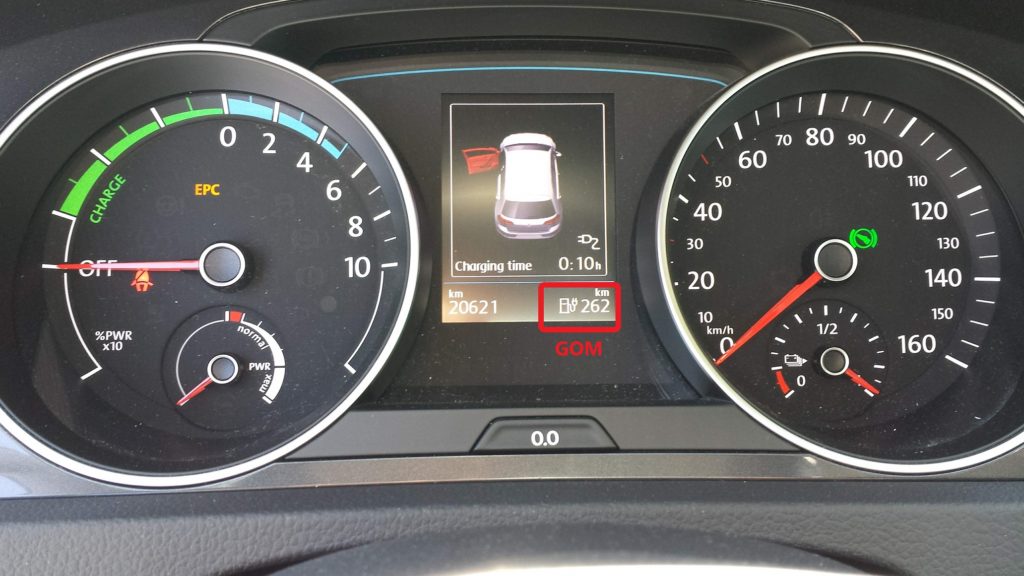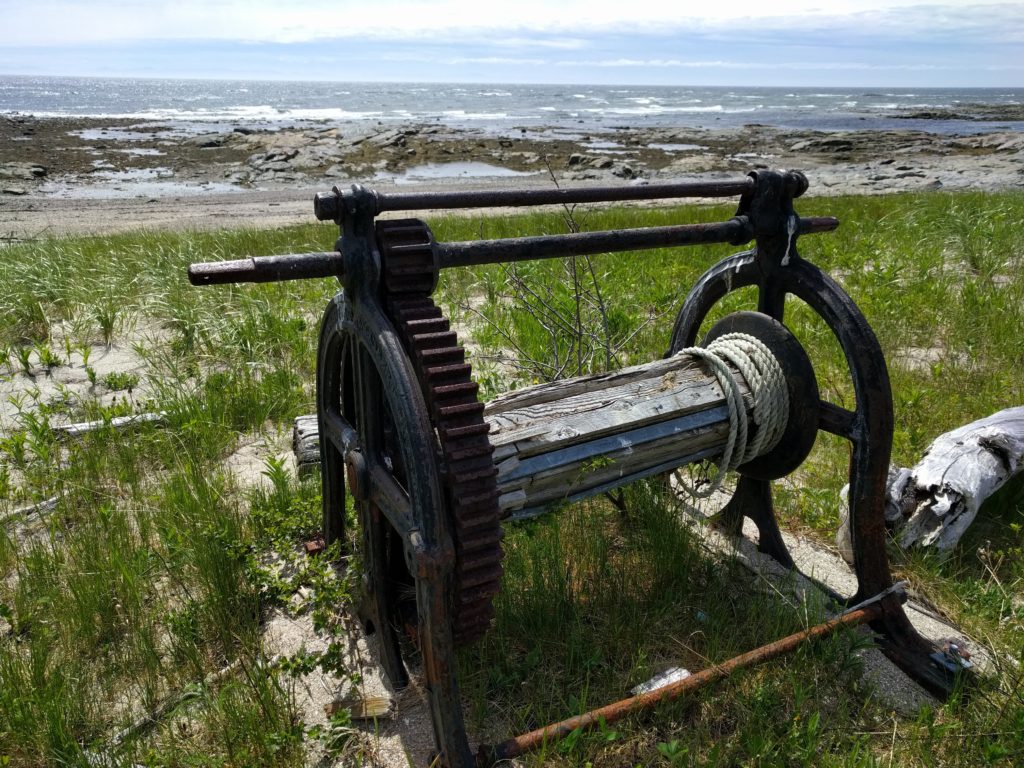
Over 4 days in June we traveled from our home in Ottawa to Baie-Trinité on the North shore of the St Lawrence and back. The journey was a great chance to look at how the charging network in Quebec is deployed and to look at how the rest of Canada can learn from Quebec’s experience. The North shore or Côte-Nord is a vast, sparsely populated area with about 1% of Quebec’s population.
Over the 4 days we drove up and back with a stop in Quebec City in both directions. Each day was about 500km, with two Level 3 fast charges each day.
The Quebec charging network is impressive, The Electric Circuit has about 115 Level 3 fast chargers in Quebec and Eastern Ontario. The chargers have all been deployed strategically, mainly on highways with good spacing. Many of the stations have a level 2 charger as a backup. At heavily used locations 2 or more fast chargers have been installed.

The conditions for the drive were very good, just about perfect temperatures and low winds, allowing our e-Golf to excede her rated range of 201 kms. On the way to Quebec City we stopped at Galeries d’Anjou, a Shopping Centre in the east end of Montreal (Click on the link for the Plugshare information on the charger). We arrived with 22kms left on the Guess-O-Meter (GOM) after about 203 km. It was dinner time, and by the time we had found the food court and eaten the finest fast food available, the car was charged.

The next stop was at Roulez Électrique in Trois-Rivieres, a run of about 125 km. Another 125 km later we stopped for the night at Château Repotel Henri IV in Quebec City. The hotel had one Level 2 charger which provided a full charge overnight. Hotels are increasingly providing chargers to their guests, As anyone with an EV will strongly prefer to charge overnight, this is a good business move. Tesla offers a “Charging Partners Program” to provide discounted or free chargers to hotels and similar places. This program will provide both Tesla and regular Level 2 chargers to suitable properties.

After a quick stop in St Anne de Beaupré to pick up coffee, we headed off to our first charging stop at Saint-Siméon, a distance of about 182 km. St Anne would be a great spot for a charger, but the Church does not seem to be up to speed yet. Past St Anne, the geography changes, you are no longer in the relatively flat country that stretches from Windsor to Quebec City. The terrain becomes much more three-dimensional, with rolling hills and great views of the St Lawrence.
Saint-Siméon is a great example of how to do a charging station right, located at the tourist information centre in the village, with toilets on-site. The station has a Level 2 as backup and is prewired so that another Level 3 fast charger can be added when it is needed. The only thing missing was a little coffee shop.
Sometimes things are not as they should be. The next charger from Saint-Siméon is at Forestville, a 135 km run. Sadly this charger was not working, but thankfully this was clear from Plugshare. So the next available charger is at Ville de Ragueneau about 207 km from Saint-Siméon. Thankfully, this was in range, we had over 260km on the GOM. The drive to Ragueneau was great, nice roads, a ferry and lots of great views. The only downside was the hills. EVs don’t use a lot more going up and down hills, but the GOM will guess that the big hill you are going up will continue forever and show a big drop in range. This is restored as you come down the hill, so other than creating some range anxiety, it all works out in the end. It would be nice to have the GOM look at the elevation and give better numbers, but Alice does not have a built in nav system, we use Android Auto which needs an EV mode, but that’s another story.
The charger at Ragueneau came into view with about 25 km left on the GOM and all was well. The picture at the top of this post was taken there. Another tourist information location with toilets, a park, right on the shore. After a quick stop in Baie-Comeau, we got to Baie-Trinité in the afternoon.

We stayed overnight at a friends house so we had 16 hours of Level 1 charging before we left on the return trip via Quebec City with a GOM of about 160 km. We stopped at Ragueneau for a full charge as the car was heavier and we had a bit of a headwind. We arrived at Saint-Siméon with 32 km on the GOM.
We stayed overnight at the Hotel Chateau Laurier in Quebec City, taking advantage of one of the 4 charging stations they have in their parking.
In the morning we played tourist in Quebec City and had crepes for lunch. Heading home in the afternoon we stopped at Baie-de-Maskinongé, a highway service centre that turned out to be on the eastbound lanes adding a few kms to the trip. The last stop was at Rigaud. The weather was warm and this stop saw our charging speed drop to about 20kW or about 122 km/h. This delayed us by about 20 minutes. This was the same behaviour seen by Tesla Bjorn in his e-Golf test drive. I have now got an OBDeleven so I can monitor the battery temperatures and all the other charging parameters, but given that it took 4 long days for this to happen rather than the few hours it took Bjorn, I am not too concerned.
Much of Quebec is now easily accessible to almost all EVs, at least in the summer and is a great place to tour. New Brunswick and Nova Scotia have growing networks and travel from Ottawa to Halifax and beyond will be very simple by next year. The charging network is designed with the right spacing of chargers, with capacity added where needed. Quebec should be used as a model for other provinces.
Trip Statistics:
| Total Distance | 1964 km |
| Total Energy | 299 kWh |
| Total Cost | $77.65 |
| Charging on the road | 6:23 hours |
| Level 3 Charges | 8 |
| Level 2 Charges | 3 |
| Level 1 Charges | 1 |
| GHG Emissions Avoided | 295 kg |
You can look at the detailed data here.
Views: 297


